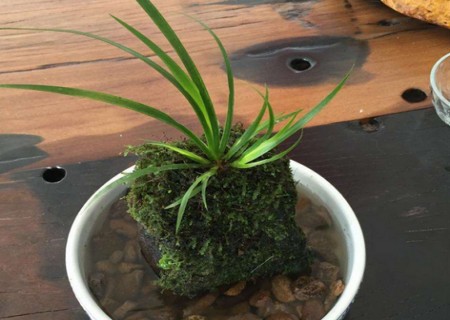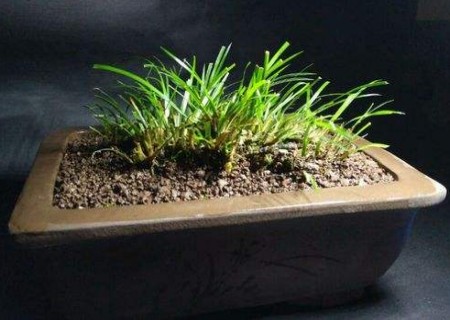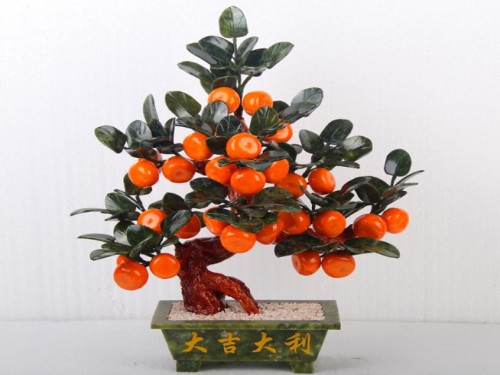Can Acorus calamus be cultured in water? How does Acorus calamus grow in water?
Acorus calamus likes Yin good wet, from this point, water culture is better than mud planting, but water culture can only soak the roots, not leaves, so that it can be placed in the flower shade, so that it is exposed to the wind, and do not expose it to the sun. The summer climate is hot, in addition to visitors to watch, the gladiolus water basin should be placed in the underworld all day to avoid heat consumption of nutrients.
Can Acorus calamus be cultured in water?
In fact, in addition to soil culture, Acorus calamus can also be cultured in hydroponics. Basin friends only need to add a small amount of soil or moss tied to the stone hydroponics, survive for a period of time and then slowly remove the soil and moss step by step to enter the normal maintenance and management.

So, how does Acorus calamus grow in water?
Good water is a big old root, which winds like a dragon above the mud, but it is not easy to find. Sporadic small plant calamus can be tangled into a ball, and then wrapped with palm skin can be placed in a water basin, but the small plant calamus root is very short, agglomeration, wrapping is not easy, you can use enamelled wire to form a series of these gladiolus (note: do not hurt its old root), and then enamelled around with enamelled wire around several circles, although it is not easy to dissolve by water immersion stone pressure.
The method of water culture of Gladiolus
1. Acorus tatarinowii can only be cultivated in containers and embellished at the bottom of the stream or pond. When growing in containers, you can choose 30x50 cm caliber flowerpots or 40x40 and 60x60 cm soft plastic bowls. If the water is very clear, overlooking the bottom, it is best to choose the former, beautiful and generous.
2. Ordinary garden soil can be selected for cultivation, and 6-10 plants can be planted in each basin or bowl without chemical pollution, such as pond mud and river mud. If the design is required, it should be carried out according to the design. When the cultivated soil is too barren, an appropriate amount of base fertilizer should be added to the soil.
3. Keep the water depth 30-40 cm. When the water is too deep, the basin or bowl should be raised. If fish are raised in a pond or river, a layer of pebbles should be placed on the surface of the basin to prevent the fish from rolling and stirring the soil out of the basin or bowl.
4. When the natural temperature is lower than 3 °C, move to the greenhouse with good light to survive the winter. If you are not ready for evergreen overwintering, you should take it out before the pool water freezes and cut off the above ground cellar or cold room to survive the winter. The pond and river are not dry in winter, and when there is still water above the ice layer or flowing all the year round, it can also be stored in the water for the winter, or it can be taken off the basin (not off the bowl during the cultivation of the soft plastic bowl) and buried in the trough of the leeward to the sun and adhere to the humidity to survive the winter, and the basin will still be placed in the pond or river in the next spring.
Of course, the hydroponic culture of Gladiolus needs to add hydroponic nutrient concentrate in order to cultivate well. But on the whole, whether water or soil culture of Acorus calamus is inseparable from the word "water", so in the process of breeding Acorus calamus, we must avoid the occurrence of drought and do more watering.
Time: 2019-05-24 Click:
- Prev

How to grow Acorus calamus-soil Culture method
Acorus calamus is a common ground cover plant in daily life. it is evergreen and glossy, has strong vitality, can adapt to the moist and shady environment, and has a relatively good horticultural value in modern times. In addition, the rhizome of Acorus calamus is often used as medicine, the effect is quite good. So, how do you grow calamus?
- Next

Cultivation techniques of bonsai of orange trees
While visiting the botanical garden, I came across several pots of potted orange trees at the gate of the botanical garden. the small kumquat hung all over the small tree, which made people look very festive and couldn't help but want to touch these little oranges. Imagine if you could plant a few of these potted orange trees in spring and summer.
Related
- Fuxing push coffee new agricultural production and marketing class: lack of small-scale processing plants
- Jujube rice field leisure farm deep ploughing Yilan for five years to create a space for organic food and play
- Nongyu Farm-A trial of organic papaya for brave women with advanced technology
- Four points for attention in the prevention and control of diseases and insect pests of edible fungi
- How to add nutrient solution to Edible Fungi
- Is there any good way to control edible fungus mites?
- Open Inoculation Technology of Edible Fungi
- Is there any clever way to use fertilizer for edible fungus in winter?
- What agents are used to kill the pathogens of edible fungi in the mushroom shed?
- Rapid drying of Edible Fungi

